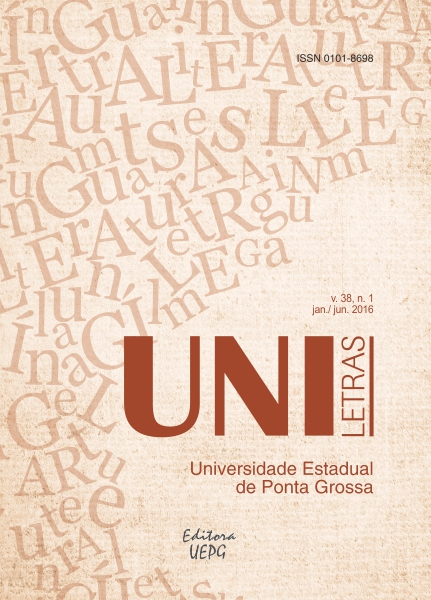O uso da construção bitransitiva do inglês: estudo comparativo baseado em corpus de falantes nativos e aprendizes brasileiros de inglês
DOI:
https://doi.org/10.5212/uniletras.v38i1.8069Keywords:
Gramática de Construção, Bitransitividade, Corpus de aprendizAbstract
Este trabalho investigou o uso da construção bitransitiva por aprendizes brasileiros de inglês e comparou-o com o de falantes nativos do inglês. Para tanto, utilizamos dois corpora de escrita acadêmica. O corpus de aprendizes selecionado foi o BR-ICLE (160.000 palavras), e o corpus de falantes nativos selecionado foi o LOCNESS (320.000 palavras). Para fazer a seleção e análise dos dados utilizamos a ferramenta WordSmith tools. Trabalhamos com o conceito de gramática de construção de Goldberg (1995) e com os conceitos de bi-transitividade de Carter e McCarthy (2006), e de Downing e Locke (2006). Os dados nos mostraram que os aprendizes brasileiros utilizaram a forma bitransitiva, porém com algumas influências do português. O que também diferenciou o uso da construção bitransitiva nos dois corpora foi a frequência de certos tipos de SN do objeto indireto.Downloads
Downloads
Published
Issue
Section
License
Authors that publish in the journal agree with the following terms:
a) The authors keep the copyright and grant to the journal the rights of the first publication, with the work simultaneously being licensed under the Creative Commons Attribution License that allows the sharing of the work with the recognition both of the authorship and the initial publication in this journal.
b) This journal provides immediate public access to all of its content, following the principle that making scientific knowledge freely available to the public provides greater worldwide democratization of knowledge. For more information about this approach, visit Public Knowledge Project, a Project that developed this system to improve the academic and public quality of research, distributing OJS as well as other softwares to support the publication system to public/open access to academic sources. Names and e-mail addresses in this website will be used exclusively for this journal purposes, not being available for other ends.

This work is licensed under a Creative Commons Attribution 4.0 International License.





